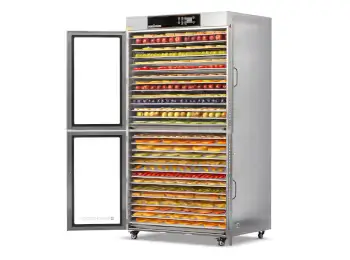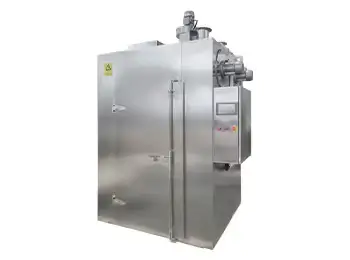Summary:
- The global legal marijuana market was valued at USD13.2 billion in 2021.38
- North America’s legal marijuana industry is expected to be worth USD42.3 billion by 2030,7 with a 15.7% CAGR from 2021.7
- Marijuana is legal in 35 states across the USA,11 with 16 states legalising it for recreational purposes.
- Cannabis has been legal for medicinal and recreational purposes in Canada since 2018.3
- California is currently the largest cannabis market in the world, with its recreational market expected to reach USD7.2 billion by 2024.25
North America is one of the most progressive regions in the world when it comes to legalising marijuana for both medicinal and recreational use. Starting with the legalisation of medical cannabis in California in 1996, many US states followed. Canada legalised cannabis for medicinal and recreational use in late 2018. The policy environment in this region, coupled with growing public support for legalising marijuana, has set the foundations for North America to be the largest market in the world now and into the future. This article provides an overview of North America’s legal marijuana industry, where it fits within the global market, and key threats and opportunities that companies in the sector should address. Given the market share of the USA and Canada in this region, this article will primarily focus on the cannabis industry in these countries.
The history of legal marijuana in North America
Marijuana is thought to have been brought to North America by the Spanish in the late 1500s.31 Medicinal use31 of the substance dates back to this time, with reports that it was used to treat inflammation, malaria, gout, depression, nausea, and as an anaesthetic. Fast forward to the early 1930s, and marijuana was prohibited until it was slowly legalised throughout the region from the late 1990s. Throughout the 19th century, “cannabis” was used to refer to the plant. However, in the early 20th century, the term “marijuana” became common as its negative connotations with drug use in Mexico amid rising racial tension31 helped garner support to prohibit the plant.
In the USA, the Marijuana Tax Act 1937 imposed impossibly high taxes that resulted in pharmacies removing cannabis from their shelves in 1941.31 And as part of the “War on Drugs”, started by President Richard Nixon, the Controlled Substances Act 197039 effectively repealed the Marijuana Tax Act 1937. From then, cannabis was classified as a Schedule 1 drug in the USA,31 putting it in the same category as heroin, LSD, cocaine and ecstasy. While the medicinal and recreational use of cannabis remains prohibited federally, it became legal for medicinal use in California through the Compassionate Use Act 1996.31 Following this, Washington, Oregon, Alaska, Maine, and Washington D.C.40 legalised marijuana for medicinal use. In the early 2000s, Nevada, Montana, Rhode Island, Hawaii, Vermont, and New Mexico also passed laws to legalise medicinal cannabis.31 There are now 39 states plus Washington D.C.15 where medicinal cannabis use is legal, and 19 states where recreational use is legal too.15
The first states in the USA to legalise marijuana for recreational use15 were Washington State, Colorado and Vermont in 2012. With 64 per cent of Americans supporting the legalisation of marijuana,41 federal legislative changes governing how the substance is cultivated, sold and used could be on the horizon. The Marijuana Opportunity and Reinvestment Expungmeent Act (The MORE Act)37 was introduced to the House in 2021 and passed on 4 January 2022. The MORE Act seeks to decriminalise marijuana by removing it from the list of controlled substances under the Controlled Substances Act while providing a federal framework for taxing retail sales of cannabis. The tax proceeds would be directed to the Opportunity Trust Fund.42 The Fund will invest in a Community Reinvestment Grant Program, supporting substance misuse treatment programs, and the equitable licensing grant program. The MORE Act37 has been before the Senate since 4 April 2022, where it was referred to the Committee on Finance.
Following the USA, Canada is the second largest cannabis market in the world, valued at USD4 billion in 2022.43 This figure is expected to grow to USD7.6 billion by 2026.43 Alberta currently has the highest number of cannabis stores, with 578 locations,23 while Prince Edward Island has the fewest. Based on the current regulatory environment and market dynamics across North America, the future of the industry in the region presents many growth opportunities.
North America’s legal marijuana industry
North America is the largest legal marijuana market in the world, accounting for 96.8 per cent of worldwide legal cannabis sales in 202027 alone. In 2021, the region’s market was worth USD10.6 billion,7 and it’s expected to be worth USD42.3 billion by 2030,7 based on a 15.7% CAGR from 2021.7 The widespread legalisation of marijuana for medicinal and recreational use across the USA and Canada has driven growth in this market while decreasing the unlicensed illicit market. For example, recent research5 has found that the number of people who reported buying from an unlicensed source in Canada went from 56 per cent in 2018 to 17 per cent in 2021.
While cannabis was used in its pure form from the 1500s to the 1900s, companies have innovated in recent decades to produce various products, from gummies to tinctures. The USA and Canada have some of the widest ranges of cannabidiol (CBD) and tetrahydrocannabinol (THC) products in the world. Further, THC was used to create the drug Marinol,31 which treats nausea and vomiting associated with cancer treatment. And like other countries, the CBD-based drug, Epidiolex, was the first CBD-based drug approved by the Federal Drugs Administration in the USA to treat epilepsy. Epidiolex was approved in 2018.31
Accessing legal cannabis for medicinal and recreational use is easier in the USA (in states where it’s legalised) and Canada than in other markets, such as the UK and Australia, where a prescription is required, and the range of medicinal cannabis products is limited. To access legal cannabis for recreational use in the US states where it is legalised, a person needs a valid state-issued card.9 Once a card is issued, a person can purchase from a licensed retailer. Similarly, for medicinal use, a patient needs a valid state-issued card9 to access medicinal cannabis products from a dispensary.
In Canada,19 retailers and individuals have to abide by the laws set by each province. An individual will need to provide proof of age to a legal retailer to access legal cannabis. There are now over 3,000 legal retailers across the country, and edibles are a significant market with an estimated CAD1.6 billion in sales annually.33
The ease at which people can buy cannabis for both medicinal and recreational use in the parts of North America where it is legal demonstrates that there are myriad opportunities for legal retailers, researchers and other associated services (such as legal and financial) to benefit from the progressive nature of the industry in the region. Further, North America’s global market dominance provides a large total addressable market and the resources to access and conduct research and development opportunities that may be faster to market than those in less developed markets. Despite the progression in North America’s legal cannabis sector, there are still challenges to overcome, particularly when it comes to funding.







































.svg)



